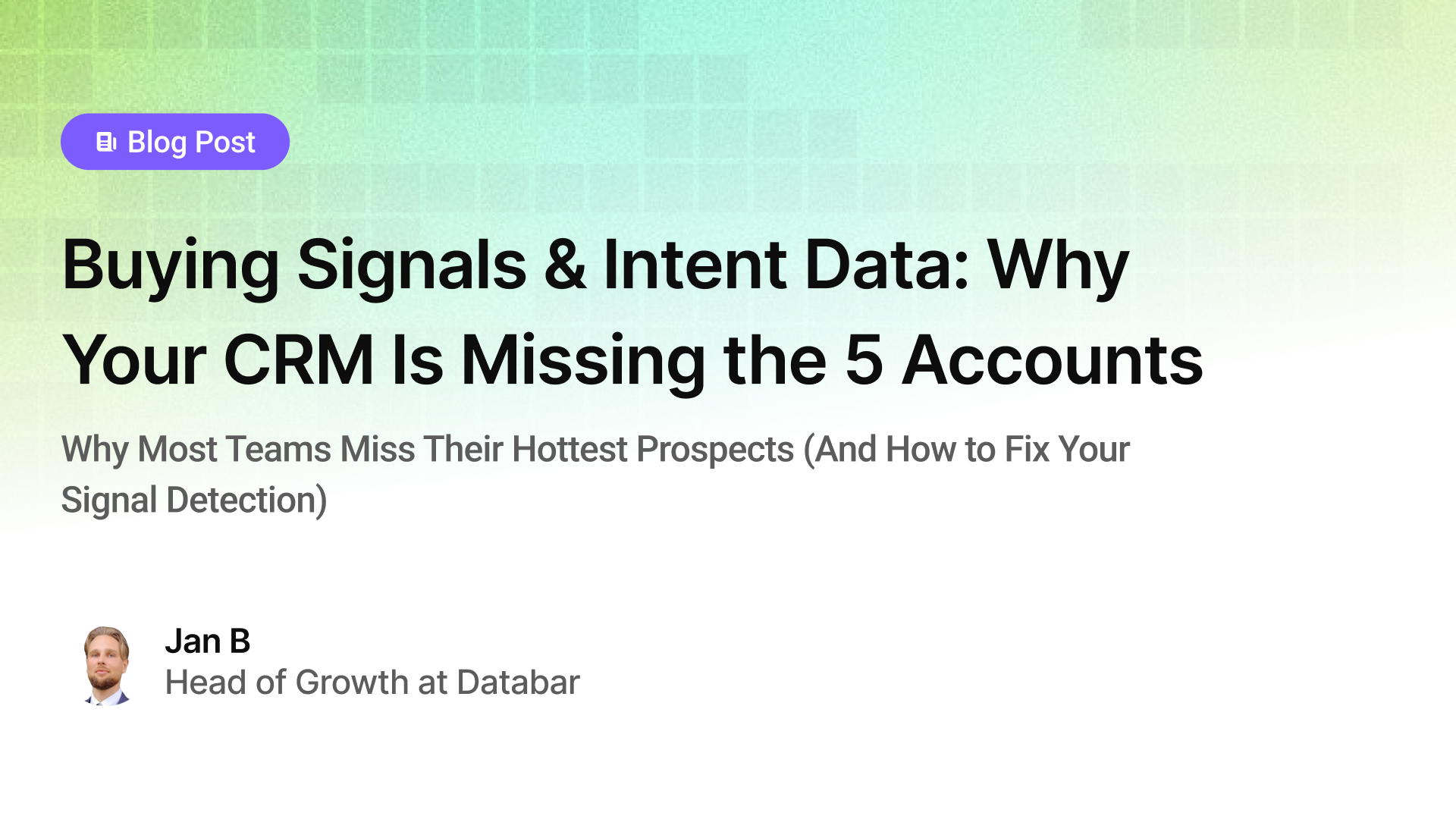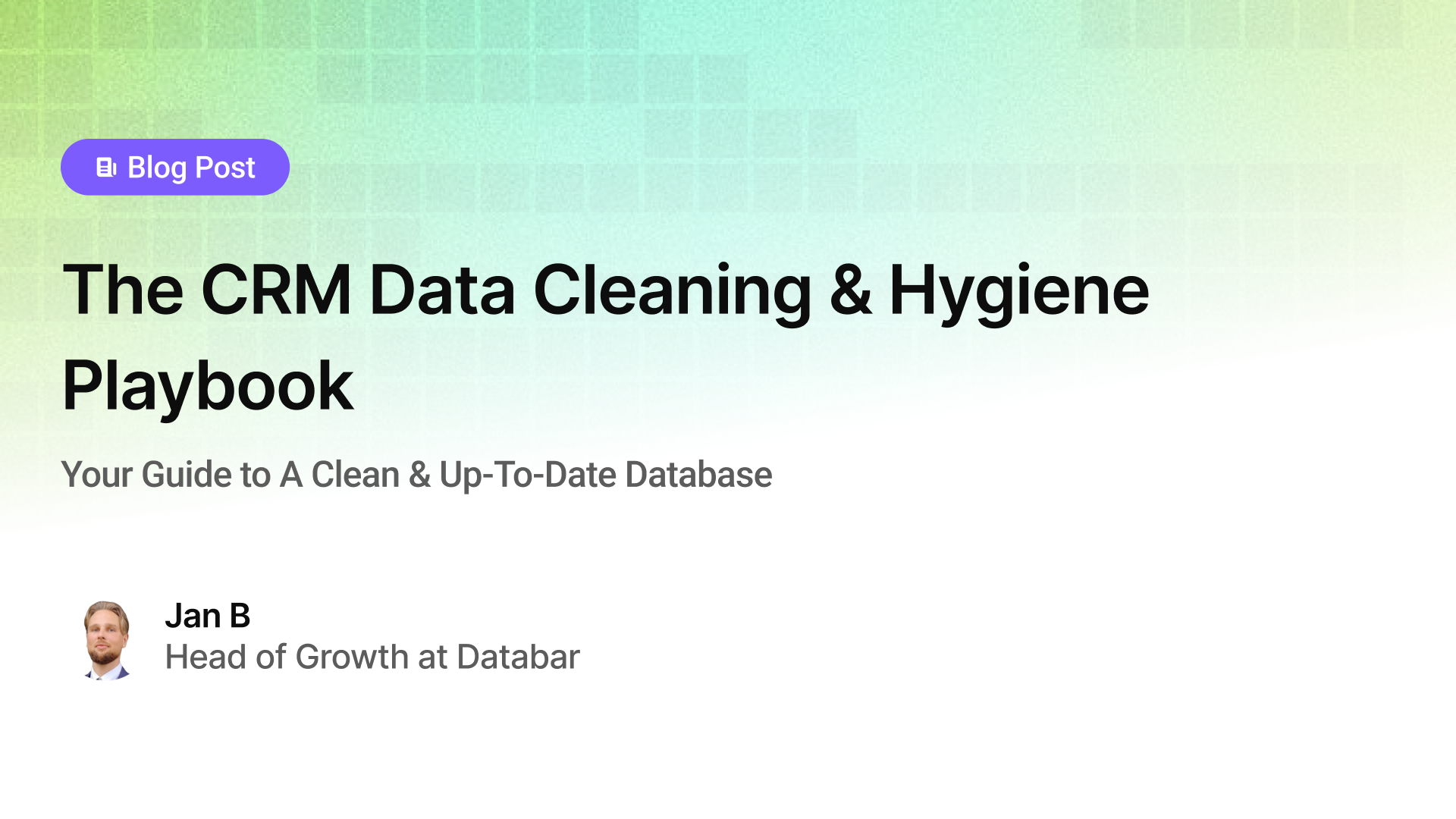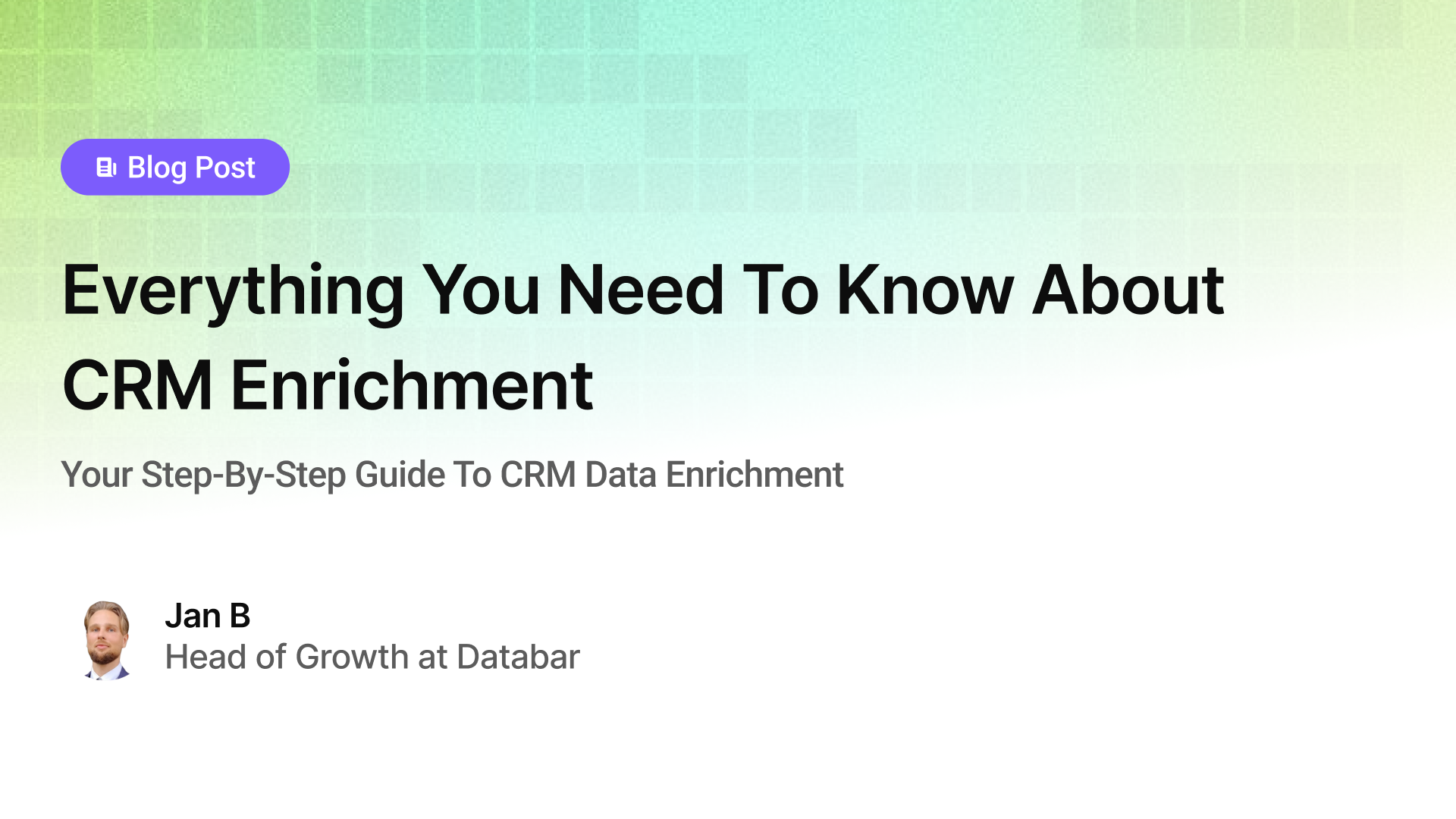Warm Outbound: The Data-Driven Sales Strategy That's Replacing Cold Calling
Why Personalized Prospecting Beats Mass Outreach Every Time
Blogby JanJune 07, 2025

Your sales team sends 1,000 cold emails this week. Three people respond. One books a meeting. Zero convert to customers.
Sound familiar?
According to recent data from Gartner, cold email response rates have dropped 68% since 2019. The average B2B decision-maker now receives over 120 sales emails per week, creating an immunity to generic outreach that's killing quotas across industries.
But while most sales teams double down on volume—sending more emails, making more calls, hoping something sticks—smart organizations are shifting to warm outbound, a data-driven approach that's generating 3-5x higher response rates by focusing on prospects who already know and trust your brand.
What is Warm Outbound? (And Why Your Sales Team Needs It Yesterday)
Warm outbound is a sales approach that targets prospects who have already engaged with your brand through website visits, content downloads, event attendance, or social media interactions. Unlike cold outreach to complete strangers, warm outbound leverages existing touchpoints to create relevant, timely conversations.
Here's a simple comparison:
| Cold Outbound | Warm Outbound |
| No prior brand awareness | Existing brand familiarity |
| Generic messaging | Personalized based on behavior |
| 0.5-2% response rates | 15-25% response rates |
| Long education process | Shorter sales cycles |
| High rejection rates | Higher engagement quality |
The difference isn't just theoretical. When Gong.io analyzed over 300,000 sales interactions, they found that warm outbound prospects were 4.2x more likely to book a meeting and converted at rates 67% higher than cold leads.
The Psychology Behind Warm Outbound Success
Understanding why warm outbound works requires looking at how B2B buyers actually make decisions. Research from the Ehrenberg-Bass Institute reveals that only 5% of B2B buyers are actively looking for new solutions at any given time. The remaining 95% aren't ready to buy—yet.
This is where warm outbound strategies excel. By tracking and engaging prospects who show early interest signals, you're building relationships before they enter active buying mode. When they're finally ready to evaluate solutions, you're already a trusted option rather than another interruption.
The psychological principles at play:
Recognition breeds trust: Prospects are 7x more likely to engage with brands they recognize. Every website visit, content download, or social interaction builds this recognition.
Reciprocity drives response: When you reference specific actions prospects took (visiting your pricing page, downloading your guide), you're acknowledging their investment of time, triggering a reciprocal response.
Timing beats persistence: Research shows that following up within 5 minutes of a high-intent action (like a pricing page visit) increases conversion rates by 400%. Warm outbound capitalizes on these moments of peak interest.
Building Your Warm Outbound Engine from Scratch
Creating an effective warm outbound process requires more than just tracking website visitors. You need a systematic approach to identify, qualify, and engage prospects at scale.
Step 1: Install Tracking
Start by implementing tracking across all digital touchpoints. This includes:
- Website visitor identification
- Content engagement
- Email interaction monitoring
- Social media engagement data
- Event and webinar attendance
Modern tools can de-anonymize up to 30% of your website traffic, revealing company information even when visitors don't fill out forms.
Step 2: Define Your Warm Lead Criteria
Not every website visitor deserves immediate outreach. Establish clear criteria for what constitutes a warm lead:
Behavioral signals:
- Visited high-intent pages (pricing, demo, case studies)
- Spent significant time on site (5+ minutes)
- Returned multiple times within 30 days
- Downloaded bottom-funnel content
Firmographic alignment:
- Matches your ideal customer profile
- Appropriate company size and industry
- Located in your target markets
- Uses compatible technologies
Step 3: Create Your Engagement Workflows
Design multi-channel sequences that reference specific behaviors. A visitor who read three blog posts needs different messaging than someone who viewed your pricing page five times.
Example workflow for pricing page visitors:
- Hour 1: Personalized email referencing their visit
- Day 2: LinkedIn connection request with context
- Day 4: Follow-up email with relevant case study
- Day 7: Direct phone call from sales
Step 4: Align Sales and Marketing
Warm outbound breaks down when marketing and sales operate in silos. Establish clear handoff processes:
- Service level agreements for follow-up timing
- Shared definitions of qualified leads
- Unified reporting on pipeline impact
- Regular feedback loops for optimization
Data-Driven Warm Outbound: Finding and Qualifying Your Best Prospects
The foundation of successful warm outbound prospecting is data—specifically, knowing who's engaging with your brand and what their behavior signals about buying intent.
Website Visitor Intelligence
Modern visitor identification tools reveal more than just company names. You can access:
- Company firmographics (size, industry, revenue)
- Technology stack information
- Recent funding or growth signals
- Key decision-maker contacts
But raw data isn't enough. The magic happens when you combine multiple data sources to build complete prospect profiles.
Intent Data Integration
Layer first-party website data with third-party intent signals:
First-party signals (what happens on your properties):
- Page views and dwell time
- Content downloads
- Form submissions
- Email engagement
Third-party signals (what happens elsewhere):
- Competitor website visits
- Industry publication engagement
- Technology research behavior
- Peer review site activity
When combined, these signals paint a complete picture of where prospects are in their buying journey.
Lead Scoring for Warm Outbound
Traditional lead scoring often fails because it weights all actions equally. For warm outbound, you need dynamic scoring that reflects actual buying behavior.
|
High-value actions (10-15 points): |
Medium-value actions (5-9 points): |
Low-value actions (1-4 points): |
|
Pricing page visits |
Blog post engagement | Homepage visits |
| Case study downloads | Webinar attendance | About page views |
| Demo request page views | Social media follows | Single page sessions |
| Free tools used | Newsletter signups | Career page visits |
Set your outreach threshold based on historical conversion data. Most organizations find success targeting prospects who accumulate 25+ points within a 30-day window.
Crafting Messages That Actually Get Responses
The biggest mistake in warm outbound messaging? Treating it like cold outreach with a slightly warmer opening line. Effective warm messages require a fundamentally different approach.
The Anatomy of High-Converting Warm Outbound Messages
Subject line: Reference their specific action
- "Following up on your visit to our API documentation"
- "Question about your pricing research"
- "Thoughts on the ROI calculator you tried?"
Opening: Acknowledge their research with specifics
- "I noticed you spent a few minutes reviewing our enterprise features yesterday..."
- "Saw you downloaded our integration guide—implementing something similar?"
Value proposition: Connect to their demonstrated interest
- "Based on your focus on our automation features, I thought you'd find this relevant..."
- "Since you're evaluating enterprise solutions, here's what similar companies discovered..."
Call-to-action: Make it easy and specific
- "Worth a quick 15-minute call to discuss your API requirements?"
- "Can I send you our enterprise pricing guide?"
Personalization That Scales
True personalization goes beyond merge tags. Use behavioral data to customize entire message themes:
For technical evaluators (visited documentation, API pages): Focus on implementation details, technical specifications, integration capabilities
For economic buyers (visited pricing, ROI calculator): Emphasize value proposition, cost savings, competitive advantages
For end users (engaged with feature pages, tutorials): Highlight ease of use, time savings, specific workflow improvements
Automating Warm Outbound Without Losing the Human Touch
Automation makes warm outbound scalable, but over-automation kills authenticity. The key is knowing what to automate and what to keep human.
What to Automate
Data collection and enrichment: Use tools to automatically capture visitor data, enrich with firmographics, and build comprehensive prospect profiles.
Lead routing and alerts: Set up instant notifications when high-value prospects engage, ensuring rapid follow-up.
Initial sequencing: Automate the first 2-3 touches based on specific behaviors, maintaining consistency while allowing personalization.
Reporting and analytics: Track performance metrics automatically to identify what's working and what needs adjustment.
What to Keep Human
Complex personalization: While AI can help draft messages, human review ensures authenticity and relevance.
Phone conversations: Automated dialers can help with efficiency, but actual conversations need skilled salespeople.
Strategic accounts: High-value prospects deserve fully customized approaches, not templated sequences.
Relationship building: Post-initial engagement, shift to human-driven relationship development.
The Tech Stack for Warm Outbound Success
Building an effective warm outbound system requires integrating multiple tools:
Visitor identification: Tools that de-anonymize website traffic
Data enrichment: Platforms that provide firmographic and contact data
Intent data: Solutions that track buying signals across the web
Automation: Workflow tools that trigger actions based on behavior
CRM integration: Systems that sync all data for sales access
Analytics: Platforms that measure and optimize performance
Look for solutions that combine multiple capabilities. For instance, platforms like Databar.ai integrate 90+ data providers in one tool, eliminating the need for multiple subscriptions while providing comprehensive prospect intelligence and automation capabilities.
Measuring Success: KPIs That Matter for Warm Outbound
Traditional sales metrics don't capture the full impact of warm outbound strategies. You need KPIs that reflect quality over quantity.
Response Rate Benchmarks
Warm outbound response rates typically range from 10-25%, compared to 1-3% for cold outreach. Track response rates by:
- Engagement level (high/medium/low intent)
- Channel (email/LinkedIn/phone)
- Message type (initial/follow-up)
- Industry and persona
Conversion Metrics That Matter
Lead to meeting rate: What percentage of warm leads book meetings?
- Benchmark: 25-35% for high-intent warm leads
- Compare to cold baseline to demonstrate ROI
Meeting to opportunity rate: How many meetings become qualified opportunities?
- Benchmark: 40-50% for warm outbound
- Track by lead source and engagement level
Sales cycle length: How much faster do warm leads move through your pipeline?
- Typical reduction: 20-30% faster than cold leads
- Measure by deal size and complexity
Common Warm Outbound Mistakes (And How to Avoid Them)
Even with the right intentions, many teams stumble when implementing warm outbound. Here are the most common pitfalls:
Mistake #1: Treating All Warm Leads Equally
Not all engagement signals carry equal weight. A CEO visiting your pricing page matters more than an intern downloading your ebook.
Solution: Implement multi-dimensional lead scoring that weighs both behavior and firmographics.
Mistake #2: Moving Too Fast (Or Too Slow)
Reaching out immediately after every website visit seems desperate. Waiting a week loses momentum.
Solution: Create timing rules based on engagement patterns. High-intent actions (pricing visits) warrant same-day follow-up. Lower-intent actions can wait 2-3 days.
Mistake #3: Over-Automating the Human Elements
Automation should enhance personalization, not replace it. Prospects can spot fake personalization immediately.
Solution: Use automation for research and timing, but have humans craft final messages for high-value prospects.
Mistake #4: Ignoring the Bigger Journey
Warm outbound isn't just about the first conversation—it's about nurturing relationships over time.
Solution: Design long-term nurture campaigns for warm leads who aren't ready to buy, maintaining engagement until timing improves.
Mistake #5: Poor Handoffs Between Marketing and Sales
When marketing generates warm leads but sales doesn't follow up properly, the entire system fails.
Solution: Create clear SLAs, shared dashboards, and regular alignment meetings between teams.
Start Your Warm Outbound Transformation Today
The shift from cold to warm outbound isn't just a tactical change—it's a fundamental reimagining of how sales teams engage prospects. By focusing on quality over quantity, timing over persistence, and relevance over volume, organizations are seeing dramatic improvements in every sales metric that matters.
The data is clear: warm outbound delivers higher response rates, faster sales cycles, and better customer relationships. The question isn't whether to implement it, but how quickly you can get started.
Your prospects are already researching solutions. They're visiting websites, downloading content, and showing buying signals. With the right warm outbound strategy, you can turn these anonymous researchers into engaged conversations and closed deals.
The tools exist. The playbooks are proven. The only thing standing between your team and better results is taking the first step.
Databar.ai changes the game by bringing together everything you need for warm outbound:
✅ Automated deduplication that catches even the trickiest duplicates
✅ AI-driven segmentation that reveals hidden opportunities in your data
✅ Smart normalization that standardizes millions of records in minutes
✅ Real-time validation that ensures your contacts are reachable
✅ Integrated enrichment that fills gaps while cleaning
✅ 90+ data providers accessible without separate subscriptions
✅ No-code workflows that anyone on your team can build and run
Start your free Databar.ai trial today!
FAQs
What's the main difference between warm and cold outbound? Warm outbound targets prospects who have already engaged with your brand through website visits, content downloads, or other interactions. Cold outbound reaches out to prospects with no prior relationship or brand awareness. Warm outbound typically achieves 3-5x higher response rates.
How quickly should we follow up on warm leads? Timing depends on the engagement type. High-intent actions (pricing page visits, demo requests) should receive follow-up within 1-5 hours. Medium-intent actions can wait 24-48 hours. The key is striking while interest is high without appearing desperate.
What technology do we need for warm outbound? Essential components include website visitor identification, data enrichment tools, CRM integration, and automation capabilities. Platforms like Databar.ai combine multiple data sources and automation features in one tool, simplifying the tech stack.
Related articles

Buying Signals & Intent Data: Why Your CRM Is Missing the 5 Accounts
Why Most Teams Miss Their Hottest Prospects (And How to Fix Your Signal Detection)
by Jan, October 06, 2025

Lead Scoring & Account Segmentation: Why Most CRMs Get This Backward (And How to Fix It)
How to build a system that tells your team who to call, when, and why
by Jan, October 06, 2025

The CRM Data Cleaning & Hygiene Playbook
Your Guide to A Clean & Up-To-Date Database
by Jan, October 04, 2025

Everything You Need To Know About CRM Enrichment
Your Step-By-Step Guide To CRM Data Enrichment
by Jan, October 03, 2025